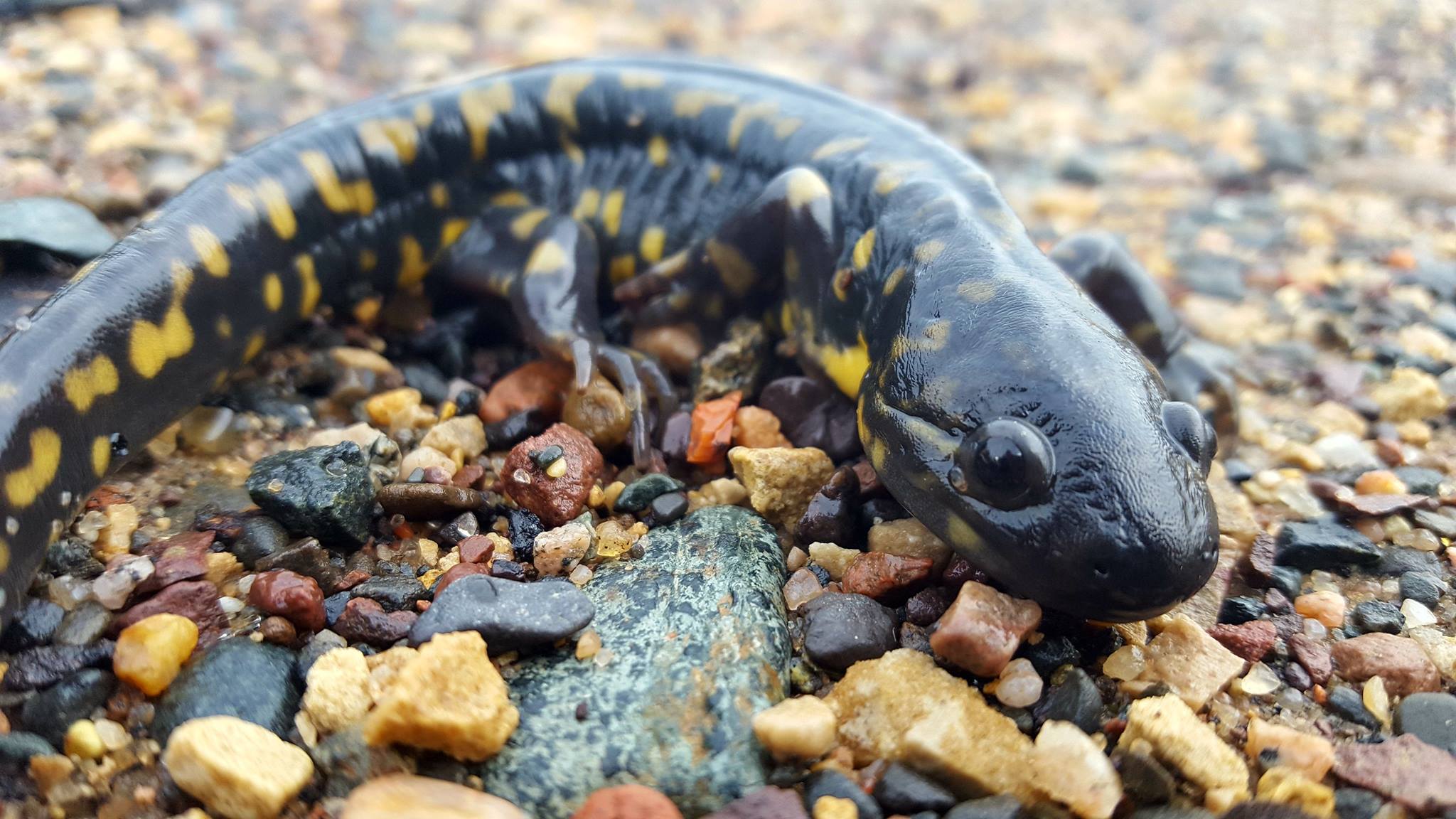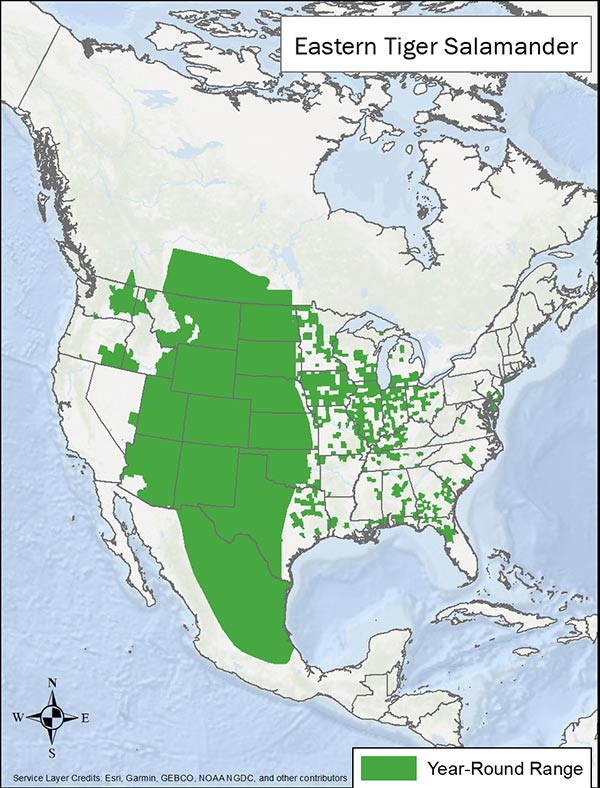LandPKS Learning
Habitat Hub

Eastern Tiger Salamander
Tiger salamanders can live up to 14 years and grow 12 in/30cm, double the average size. When too many eggs are laid in a body of water, hatchlings can turn cannibalistic as a method of survival.
Ambystoma tigrinum
Identification
The Eastern tiger salamander is an amphibian that measures 6-8 in/ 15-20 cm long and weighs 125 g/ 4.4 oz. Salamanders are dark gray to dark brown with yellow, randomly scattered splotches along the body. They are found in North America from the East Coast to the Rocky Mountains. The larvae of the Eastern tiger salamander are gray with three pairs of gills. The larvae take up to five months to metamorphosize to an adult, with total time depending on environmental factors such as weather patterns and available food.
Observation Tips
Adult tiger salamanders spend most of their time in underground burrows unless migrating or mating. Adult salamanders usually breed in the water body or pond where they were born. Breeding season depends upon local climate with spring breeding in the North and winter breeding in the South. Migration occurs at night or after recent rain with males first to arrive at breeding ponds. Females can lay up to 100 eggs attaching them to leaves, stems, or other debris that will then sink to the bottom.
Interesting Fact
Tiger salamanders can live up to 14 years and grow 12 in/30cm, double the average size. When too many eggs are laid in a body of water, hatchlings can turn cannibalistic as a method of survival.
Ideal Habitat
Eastern tiger salamanders live in terrestrial and aquatic habitats, including ponds, wetlands, or slow-moving streams surrounded by intact grasslands, shrublands or woodlands. On land, they live in burrows underground to moderate extreme weather and temperatures usually within 984 ft/300 m of breeding ponds. Burrows can either be built by the salamanders themselves or previously occupied burrows of black-tailed prairie dogs and other small rodents. These burrows provide safety until breeding time and food such as insects, worms and snails. Larvae will feed on aquatic invertebrates and insect larvae.

Range map provided by International Union for Conservation of Nature
Management Activities that Benefit Species – Best Management Practices (BMPs)
Maintain breeding ponds and intact adjacent natural lands so that adults can move between burrows and breeding ponds. Protect and maintain wetlands by preventing sedimentation, degradation, and drainage through fencing of ponds, wetlands and streams to control grazing in these areas. Provide livestock water access points or alternative off-channel water development (tanks) to benefit salamanders by protecting most or all of the shoreline. Maintain water in ponds for 3-7 months providing adequate habitat for breeding and time for larvae to become terrestrial.
Management Activities to Avoid
Avoid habitat loss and degradation through land development and wetland conversion. Introduction of predatory fish should be avoided. Avoid the drying of breeding ponds. Avoid other activities that removes most of the vegetation around ponds. Agricultural runoff or stormwater pollution into ponds can have a negative impact on salamanders.
Other Species that Benefit from Similar Habitat Management
Species that are dependent upon burrows and wetlands will benefit from practices that benefit tiger salamanders. Species that are threatened by predatory fish will benefit from similar management, including other tiger salamanders such as the Western tiger salamander.
Download
Download the Eastern tiger salamander factsheet
Other Resources
Chesapeake Bay Program: Field Guide Tiger salamander
Florida Natural Areas Inventory: Field Guide website. Tiger salamander
International Union for Conservation of Nature (IUCN). 2014. The IUCN Red List of Threatened Species. Version 2021-1 Eastern tiger salamander
NatureServe: 2021. NatureServe Explorer: An online encyclopedia of life [web application]. Version 7.1. NatureServe, Arlington, Virginia. Eastern tiger salamander
Parks Canada. 2009. Recovery strategy for the Tiger salamander (Ambystoma tigrinum) in Canada
Smith, B. 2003. Conservation Assessment of the tiger salamander in the Black Hills National Forest, South Dakota and Wyoming. USDA Forest Service report.
Photo credit: Caitlin Smith, USFWS/Flickr
Mobile App | Data Portal | Knowledge Hub | Habitat Hub | Learning Collections | Blog | About | Contact | Support



